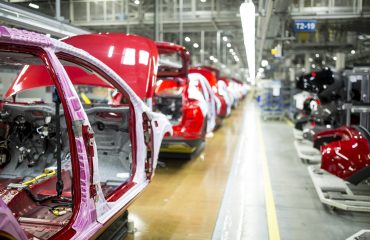Supply chains are rapidly changing in the face of new technology and practices, and supply chain management needs to be able to adjust accordingly. Changing systems, streamlining formerly bulky practices, and harnessing the power of new tech will determine the efficiency and effectiveness of supply chains going forward. Tackling the steps needed to join this wave of the future may seem intimidating, but it is both a necessary task and one that is easier than it may first appear. Most of the burden revolves around how supply chain management can handle planning amidst an increasingly complex field. The answer is to streamline functions so that they can remain lean and competitive while also reducing the managerial burden.
How to Streamline Planning for Tomorrow’s Supply Chain
The following is a list of some basic tasks that make up supply chain management. Streamlining or automating these tasks will help maintain efficiency and competitiveness within your business and help promote growth and effectiveness in operations.
Accepting New Orders
Many companies currently make use of web-based order systems that allow the rapid collection of orders from customers across the country and sometimes beyond. However, most of these systems only provide customers with fixed delivery dates based on average performance and estimates, meaning the promised lead times often don’t correlate to the actual conditions at the time of fulfillment. Streamlined planning, in this part of the supply chain, means finding ways to create smart systems that can assess and schedule orders based on the capacity and capability of the supply chain as a whole.
Releasing Orders to Manufacturing
Whenever you order from the manufacturer, the main hurdles are making sure that the raw materials needed are actually on hand and verifying that there is enough capacity to release the order. Devising automated routines can help make this a leaner process since such systems will be able to check and verify that an order is clear to be released before proceeding. On the more advanced end of the spectrum, a system might stagger releases and pre-build products when possible in order to prevent the supply chain from getting overloaded.
Sourcing Decisions and Alternate Parts
You likely have multiple options when deciding from where to source. Each option has its own pricing implications, but basic business sense says that higher costs can sometimes be worth it if a better product or reliability is obtained in exchanged. This is not always a clear-cut calculation, though; automated selections of sourcing based on elements like cost priorities, lead times, and even the potential for a source to be overloaded can help maintain efficiency of both cost and speed.
Collaborating with Suppliers
Supplier agreements dictate how orders become physical products for delivery, volume limits, and similar functions. Paper purchasing orders are all well and good, but digitizing the process allows for the creation of unified portals that customers can use to view, change, cancel, or create orders remotely. Systems that can provide these services as well as make sure such entries are automatically incorporated into orders and manufacturing will go a long way to maintaining a lean environment.
Finding a Partner in Streamlining Supply Chain Management
Lean Supply Solutions is a third-party logistics (3PL) fulfillment company whose operations are based around the Lean Methodology, a proven philosophy focused on eliminating any operations, equipment, or resources that are not capable of adding value to clients’ supply chains. By striving to ensure that the right products are provided to the right customers at the right time, Lean Supply Solutions is able to offer consistent, predictable, and quality results. To learn more about the Lean Methodology, outsourcing to Lean Supply Solutions, or to ask any questions, give us a call at 416-748-8982.



